Between the start of 2016 and the end of the first quarter in 2019, cannabis stocks were practically unstoppable. Early investors who had the wherewithal to buy and hold pot stocks often found themselves up by triple- or even quadruple-digit percentages in a relatively short amount of time.
However, the past six and a half months haven't been pretty. You could rightly say that the rug has been pulled out from underneath the feet of pot stock investors, with most marijuana stocks shedding 30%, 40%, or perhaps more than 50% of their value since the second quarter began.
While there are clear hurdles the industry needs to overcome, this precipitous decline in marijuana stocks has led to some arguably intriguing valuations. Right now, you won't find cheaper pot stocks on the planet, based on their forward price-to-earnings ratios, than the following five marijuana stocks.
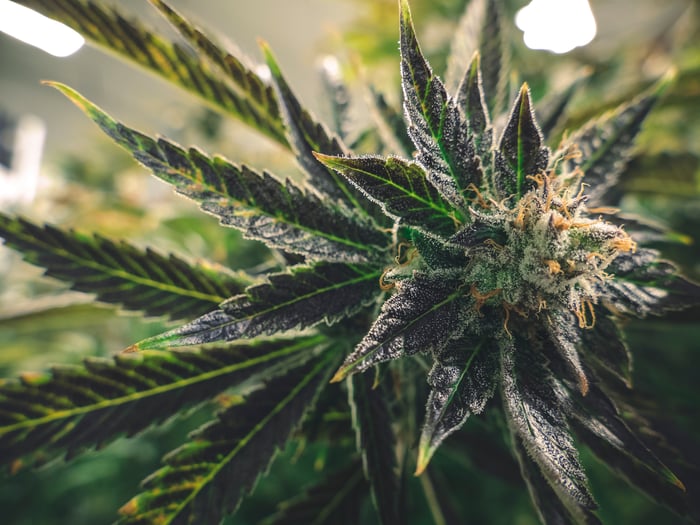
Image source: Getty Images.
Supreme Cannabis Company: 8.8 times forward-year earnings per share (EPS)
For the time being, the crown of "cheapest pot stock in the world" goes to niche Canadian cannabis grower Supreme Cannabis (SPRWF) at less than nine times Wall Street's consensus EPS for the upcoming year.
What makes Supreme Cannabis different from many of its peers is that it's focused on quality, rather than quantity. The company's 7Acres campus is only expected to produce about 50,000 kilos of marijuana annually, which places Supreme Cannabis well outside the top 10 or even top 15 producers in Canada. But the company is focused solely on premium and ultra-premium weed, which is a category that most of its peers offer little or no supply. This suggests that Supreme Cannabis should have little competition within its niche, and its pricing power, even on dried cannabis, should be strong.
Furthermore, the 7Acres facility is likely to produce at above-industry-average rates. Admittedly, peak production figures are a little difficult to pinpoint at the moment, but based on rough estimates from major growers, there are only a small number that look to offer a higher yield per square foot than Supreme Cannabis.
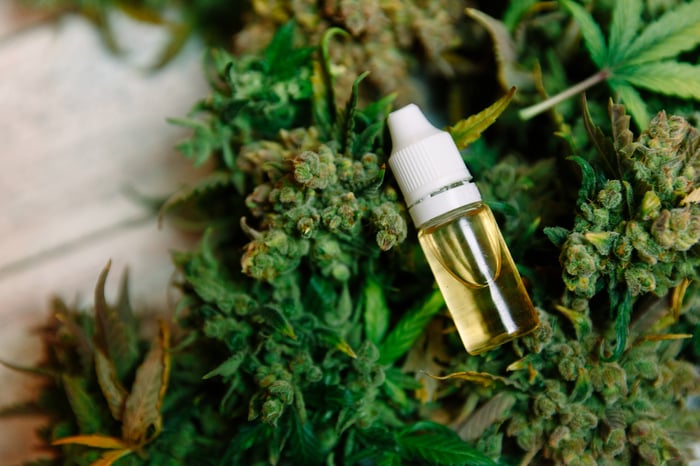
Image source: Getty Images.
Valens GroWorks: 9.1 times forward-year EPS
An exceptionally hot trend right now is extraction services, which Valens GroWorks (VLNS) is looking to ride to a forward price-to-earnings ratio of just over 9.
Next week, on Oct. 17, Canada will officially legalize cannabis derivatives, such as edibles, vapes, infused beverages, topicals, and concentrates, with these products expected to hit dispensary shelves by mid-December. To produce derivatives, growers often need third-party processors like Valens GroWorks to take cannabis and hemp biomass to yield concentrates, resins, distillates, or targeted cannabinoids. Since derivatives are a much higher-margin product than traditional dried cannabis flower, third-party extraction service companies like Valens should be busy for the foreseeable future.
In addition, these extraction providers sign intermediate-term contracts with their clients for fee-based services. That's a fancy way of saying that a company like Valens should have very predictable sales and cash flow. With significant deals with Tilray and HEXO under its belt, Valens is well under way to maximizing its annual extraction capacity.
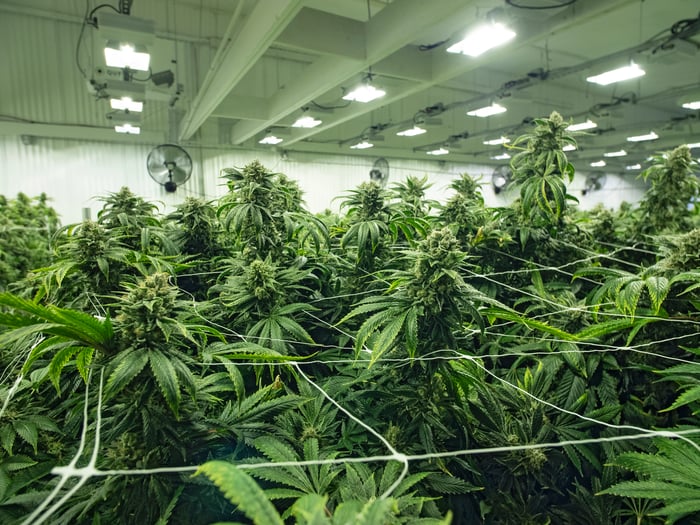
Image source: Getty Images.
Sundial Growers: 9.3 times forward-year EPS
Although it's a relatively new initial public offering, Alberta-based Sundial Growers (SNDL -7.58%) has slid right in as one of the cheapest pot stocks in the world, with a forward price-to-earnings ratio of 9.3.
The beauty of Sundial's business model is that it approaches growth from both sides of the aisle. The company has three grow farms that should, at peak capacity, produce as much as 95,000 kilos of weed per year. That places Sundial on the verge of being a major grower. Sundial is currently producing at an annual run rate of about 60,000 kilos but should end the calendar year at closer to 75,000 kilos of annual run-rate production.
On the other side of the aisle, Sundial has 3.6 million square feet at Bridge Farm in the U.K. that'll be devoted to hemp and/or processing. Note that nearly 2 million square feet of this space is still under or awaiting construction. Hemp is a considerably easier-to-grow plant than cannabis, and it's often rich with cannabidiol (CBD), the nonpsychoactive cannabinoid that's best known for its medical benefits and is regularly used in high-margin derivatives.
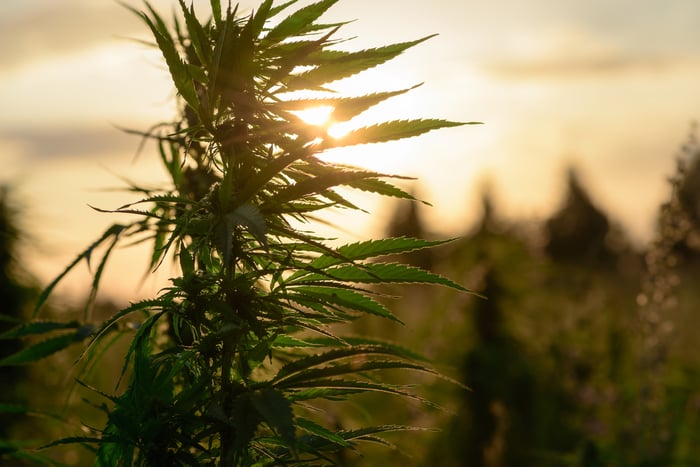
Image source: Getty Images.
Village Farms International: 11.6 times forward-year EPS
British Columbia-based Village Farms International (VFF -6.92%) is the fourth cheapest pot stock in the world.
Like Sundial, Village Farms approaches growth from a variety of ways. It formed a cannabis-growing joint venture with Emerald Health Therapeutics, known as Pure Sunfarms, in 2017. Since then, Pure Sunfarms has acquired two 1.1 million-square-foot greenhouses from Village Farms that had been used for growing vegetables. The Delta 3 facility is already fully operational and projected to produce at least 75,000 kilos per year, with the Delta 2 facility expected to be fully online and generating 75,000 kilos of yearly run-rate production by the second half of 2020.
This is a company that's also been very active on the hemp production front. Village Farms has formed two hemp-focused joint ventures that have combined to plant more than 700 acres of hemp in the U.S. thus far in 2019. Next year, this figure should climb to more than 900 acres. Plus, Village Farms has more than 5 million square feet of greenhouses in West Texas that could be retrofit for hemp production, should it choose to do so. CBD-rich hemp is a hot commodity, and Village Farms aims to take advantage of that demand.
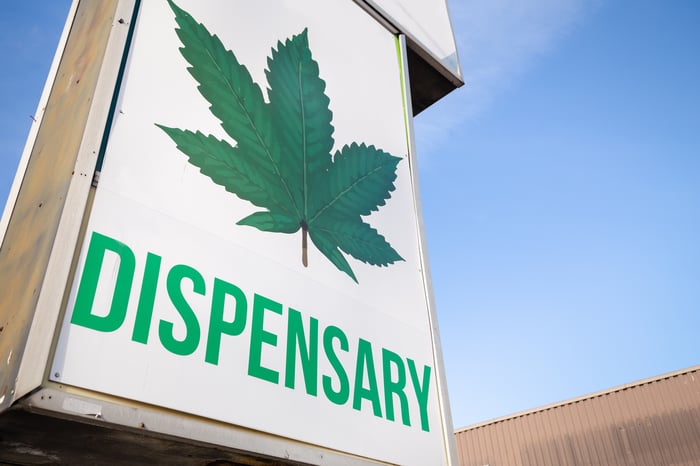
Image source: Getty Images.
Trulieve Cannabis: 13.2 times forward-year EPS
Lastly, vertically integrated multistate dispensary operator Trulieve Cannabis (TCNNF 10.28%) clocks in with a forward price-to-earnings ratio of just over 13. Of the five marijuana stocks listed here, it's the only one that's been consistently profitable for a number of quarters now.
Although Trulieve Cannabis has a presence in four U.S. states, its success is built on the fact that it's focused its efforts on its home market of Florida. Even though only medical marijuana is legal in the Sunshine State, Trulieve has generated plenty of growth and gobbled up significant market share. The company recently opened its 37th store in Florida, and by doing so has been able to effectively build up its brand and image, all while keeping its expenses reasonably low.
Beyond Florida, Trulieve Cannabis is aiming to build its brand in California, Massachusetts, and Connecticut, all of which are billion-dollar potential markets by 2024, save for Connecticut. If Trulieve can use its Florida success as a blueprint for expansion into other states, the sky is the limit.





